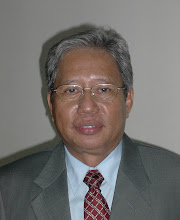2.1 Project Cycle
Like the other sectors of government project development and management, the water resources sector development and management within a river basin is following a cycle of projects, which is consist of:

2.2 Water Resources Projects Activities (See Table 2.2 below)
Table 2.2 Activities for every stage of studies, implementation and monitoring
 2.3 Master Plan
2.3 Master Plan
Master plan must be revised periodically. It becomes obsolete if the assumptions regarding the future are not realized. The changes in assumptions are due to changes in technology, economic development, and public attitude.
Please see article "Water Resources Development Studies is Sarawak". The plans and studies are related to the elements of water resources development in Sarawak State. It shows the various stages of studies that can be used as information to conduct master plan study for each river basin in Sarawak.
Also see “Sabah Water Resources Master Plan” at http://www.did.sabah.gov.my/eng/wrmp_index.asp
Like the other sectors of government project development and management, the water resources sector development and management within a river basin is following a cycle of projects, which is consist of:
- Master Planning;
- Feasibility study;
- Engineering Design;
- Construction;
- Operation & Maintenance;
- Rehabilitation or Restoration.

The terms used to describe the stages in planning are subject to variations in use and interpretation, but in general are summaries below:
- Inventory by region or river basin of potential schemes for development, determine on aerial photography plus other information, in term of land and water availability and access;
- Identification of projects by name, during or after the inventory, and notification of interest parties;
- Reconnaissance to clarify aspects not resolved during the inventory, by conducting field survey, and classification to determine scope of further studies, if any;
- Pre-feasibility study and screening to compare outlines or types of scheme which may fulfill the objectives; to compare approximate cost and benefits; to select schemes for further study; and to determine the requirements for survey and investigations;
- Feasibility study to establish the need, and to define precisely the scheme to meet the need; recommend a program for implementation; draw attention to possible problems; calculate capital, running costs and benefits; and indicate whether the project is technically and economically viable;
- Design is to conduct preliminary designs and/or detailed final designs, to produce contract documents, and cost estimates;
- Construction is to implementation the intended development project or the hydraulics infrastructures.
- Operation of the facilities of infrastructures, where during the design stage the Operation Manual, and Operation Rules have to be prepared;
- Maintenance of the facilities that consist of “Routine maintenance”, and “Special Maintenance”. An example for special maintenance is the maintenance and repair works that should be conducted after a flood event;
- Rehabilitation is the activities due to the accumulation of problems that cannot be solved by maintenance only. The rehabilitation is activities to bring back the facilities into their design capacity.
- Restoration is to bring the nature back into the current condition of the river basin degradations.
- A Master Plan is for setting priority of a series of name schemes to develop the water resources within a region (usually a river basin, but sometimes also an administrative unit). It may be prepared at any stage of the study, but it usually done as part of, and as a product of, pre feasibility studies.
- A combine reconnaissance stage may include an inventory and identification of project; and
- Detailed reconnaissance may overlap the scope of pre-feasibility study;
- A detailed feasibility study may include some design works.
2.2 Water Resources Projects Activities (See Table 2.2 below)
Table 2.2 Activities for every stage of studies, implementation and monitoring
 2.3 Master Plan
2.3 Master Plan Master plan must be revised periodically. It becomes obsolete if the assumptions regarding the future are not realized. The changes in assumptions are due to changes in technology, economic development, and public attitude.
Please see article "Water Resources Development Studies is Sarawak". The plans and studies are related to the elements of water resources development in Sarawak State. It shows the various stages of studies that can be used as information to conduct master plan study for each river basin in Sarawak.
Also see “Sabah Water Resources Master Plan” at http://www.did.sabah.gov.my/eng/wrmp_index.asp

Comments
saya tertarik dengan postingan ini karena membahas tentang logical framework approach (LFA), dan beberapa prosedur yang sedang saya pelajari untuk studi kasus beberapa permasalahan di negara berkembang , khususnya Indonesia.. apakah anda mempunyai alamat e-mail yg bisa saya hubungi untuk sekedar menanyakan hal2 sehubungan dengan subjek tsb? terimakasih,
V.A. , Melbourne 2010.